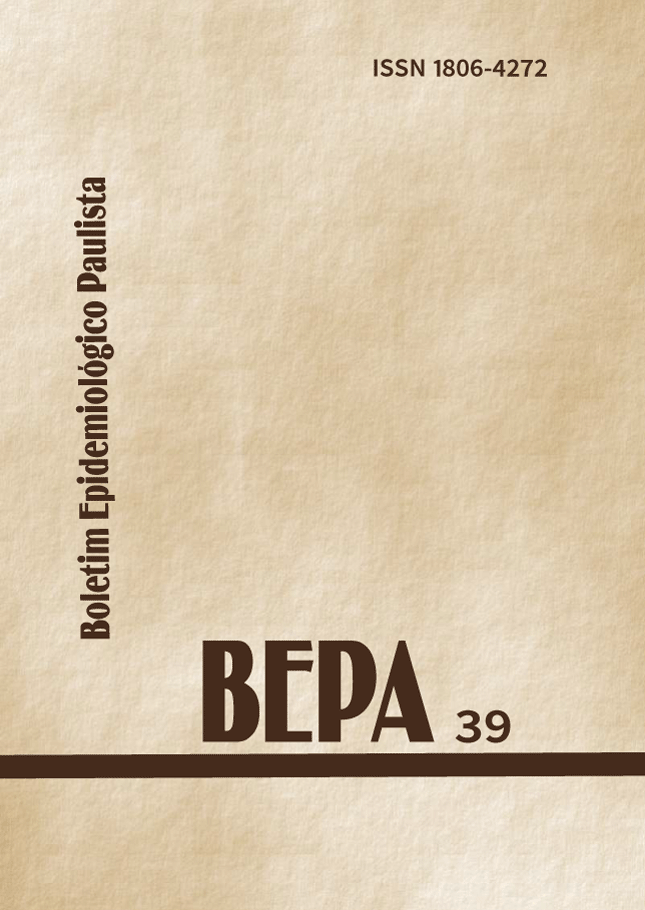Abstract
We evaluated the feeding habits of Lutzomyia longipalpis in areas in which American visceral leishmaniasis is occurring, in the city of Araçatuba, in the State of São Paulo. During the period comprised between 1999 to 2001, monthly entomologic captures were performed in three areas of the city, and 123 residences/area were researched for samples, spending 20 minutes at each household. Ingurgitated females were separated and preserved at -20°C, until performance of the exam of their intestinal contents, by the immune-precipitate reaction in capillary tubes. We used anti-sera from: pets (dog, horse, cat and hen), rodents and human beings. For the performance of the reaction, each female was placed in a tube with 0,2mL os sterile physiological solution with merthiolate at 0,85%, for 12 hours. Later, they were macerated and centrifuged and 30ml of the surfacing was transferred for the capillary tube and added 30ml of anti-sera. Reaction was considered positive when a whitish clot up until two hours after the start. We collected 1540 L. longipalpis females and, among these, 699 were ingurgitated at collection and 613 (87,7%) were submitted to the test, resulting in 45,6% of reactive samples. Among the reactive samples, 91,4% reacted to canine blood. Among the 25 samples which were reactive to human blood, 22 (88,0%) were also reactive to dog. In Araçatuba, L. longipalpis showed eclectic feeding habits regarding fedding source, showing a high cinophiliac degree. Even though birds did nor represent the major feeding source, it is important to be alert to their epidemiological meaning, since they allow harboring of the vector. No feeding changes were observed that could be linked to vector control activities
References
Camargo-Neves VLF. Aspectos epidemiológicos e avaliação das medidas de controle da Leishmaniose Visceral Americana no Estado de São Paulo, Brasil. São Paulo. [Tese de Doutorado]. Universidade de São Paulo (USP): 225 pp, 2004.
Camargo-Neves VLF de, Katz G, Rodas LAC, Poletto DW, Lage LC, Spinola RMF, Cruz OG. Use of spacial analysis tools in the epidemiological surveillance of American visceral leishmaniasis, Araçatuba, São Paulo, Brazil, 1998 – 1999. Cad. Saúde Pública 2001. Rio de Janeiro 17 (5): 1263-1267.
Camargo-Neves VLF, Rodas LAC, Pauliquévis Jr C. Avaliação da efetividade da utilização de coleiras impregnadas com deltametrina a 4% para o controle da leishmaniose visceral americana no Estado de São Paulo: resultados preliminares. BEPA 2004 [Boletim on-line]. Disponível em: http://www.cve.saude. sp.gov.br/agencia/bepa12_lva.htm.
Corredor A, Gallego JF, Tesh RB, Morales A, Ferro CC, Young DG, Kreutzer RD, Boshell J, Palar MY, Caceres E, Pelaez D. Epidemiology of visceral leishmaniasis in Colombia. Am J Trop Med Hyg 1989; 40: 480-486.
Dias FOP, Lorosa ES, Rebêlo JMM. Fonte alimentar sangüínea e a peridomiciliação de Lutzomyia longipalpis (Lutz & Neiva, 1912) (Psychodidae, Phlebotominae). Cad. de Saúde Pública 2003; 19 (5): 1373-1380.
Forattini OP. Subgênero Lutzomyia França, 1924. In: Entomologia Médica 4º vol. Psychodidae. Phlebotominae. Leishmanioses. Bartolenose. São Paulo: Editora Edgard Blucher e Editora da Universidade de São Paulo 1973; p. 212-228.
Forattini OP, Gomes AC, Natal D, Kakitani I, Marucci D. Preferências alimentares de mosquitos Culicidae no Vale do Ribeira São Paulo, Brasil. Rev Saúde Pública 1987; 21 (3): 171-187.
Goméz B, Sanchez E, Feliciangeli MD. Man – Vector contact of Phlebotomine sand flies (Diptera: Psychodidae) in North-Central Venezuela as assessed by blood meal identification using DOT-ELISA. J of the American Mosquito Control Association 1998; 14 (1): 28-32.
Lainson R, Shaw JJ, Silveira FT, Fraiha H. Leishmaniasis in Brazil: XIX Visceral leishmaniasis in the Amazon Region, and the presence of Lutzomyia longipalpis on the island Marajó, Pará State. Transactions of the Royal Soc. of Trop. Med. and Hyg. 1983; 77: 323-330.
Morrison AC, Ferro C, Tesh RB. Host preference of the sand fly Lutzomyia longipalpis at an endemic focus of american visceral leishmaniasis in Colombia. Am J Trop Med Hyg 1993; 49: 68-75.
Quinnell R J, Dye C. Correlates of peridomestic abundance of Lutzomyia longipalpis (Diptera: Psychodidae) in Amazonian Brazil. Medical and Veterinary Entomology 1994; 8: 219-224.
Quinnell R J, Dye C, Shaw J J. Host preferences of the phlebotomine sand fly Lutzomyia longipalpis in Amazonian Brazil. Medical and Veterinary Entomology 1992; 6: 195-200.
Young DG, Duncan MA. Guide to the identification and geographic distribuition of Lutzomyia sand flies in Mexico, the West Indies, Central e South America (Diptera: Psychodidae). Memoirs of the American Entomological Institute 54. 881 pp Associated Press of the Entomological Institute, Gainesville, FL, 1994.

This work is licensed under a Creative Commons Attribution 4.0 International License.
Copyright (c) 2007 Vera Lucia Fonseca de Camargo-Neves, Lílian Aparecida Colebrusco Rodas, Almério de Castro Gomes
